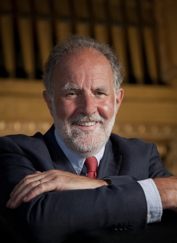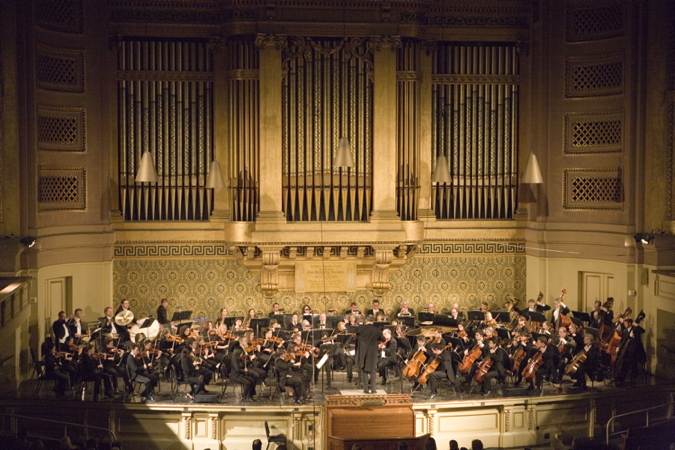Picc.1.2(E.H.)21/3331/ timp./1perc (very small set up*)/1hp/str
requiring very few percussion instruments.
First performance by the New Haven Symphony Orchestra, William Boughton, conductor
New Haven, Connecticut, on 10 March 2011
Duration: 7 minutes
*Featuring Brass and Timpani; the percussion set up is very small

MSO Musical Journeys: Maestro Ken-David Masur interviews special guest Augusta Read Thomas

Program Note by Carol Wright
Dedicated with admiration and gratitude to William Boughton and the New Haven Symphony Orchestra
— and — To William E. Curran in recognition of his longstanding generosity and his deep understanding of the importance of the New Haven Symphony Orchestra to the communities of the greater New Haven region.
Commissioned by the Barlow Endowment for Music Composition at Brigham Young University and the New Haven Symphony as part of a MUSICALIVE grant from the League of American Orchestras and Meet the Composer.
Augusta Read Thomas began writing orchestral music when she was 15 years old. Throughout her career Ms. Thomas has enjoyed writing for players she knows — either as soloists or in ensembles. Radiant Circles was written for the New Haven Symphony Orchestra, begun March of 2010 and finished in September, during her time as MusicALIVE Composer-in-Residence with the orchestra. During her two years working with the NHSO, she has grown to know the individual players and the orchestra as a whole ("a very good, virtuosic, committed orchestra," she says). Having studied composition at the Yale School of Music, she also understands the acoustic peculiarities of Woolsey Hall, the NHSO's principal venue. Thus Radiant Circles not only takes advantage of the orchestra's strengths but also plays on the long-lasting reverberation of Woolsey, achieving a glow that is present in the piece from beginning to end, like a light with a radiant circle around it.
Ms. Thomas prefers titles that are poetic and suggestive, rather than explanatory. Radiant Circles, the title, has astral overtones, suggesting the rotation of stars and the sun, the circling of celestial bodies. The composer has built the piece so that waves of sound follow one another, closing in on themselves and starting again, the sound becoming circular in a way. "In the hall, everything lingers in the air, and at the end," she says, "you are back at a flourishing, bright elaboration of where you started."
In terms of its dynamics, Radiant Circles could be described as a 12-minute crescendo that breathes, dips and ebbs along the journey. The piece opens gently with poised colorful harmonies, as if music were suspended in the air, one note entering at a time, like individual bells or like stars being switched on and beginning to flicker.
In the second half of the piece, which features the orchestra's brass section, these resonant circles become spirals turning faster and faster as the harmonies are condensed into a smaller spaces. Eventually the music coalesces into a fanfare. The percussion instruments — which include a five-drum set of timpani, triangles, crotales (small tuned cymbals), glockenspiel, vibraphone, a suspended cymbal, and a tam-tam — add to the rising energy level. Timpani enthusiasts will enjoy this work for the virtuosic and athletic solo during which the timpanist can claim the spotlight.
Ms. Thomas believes, and listeners have concurred, that her work is nuanced, with many shadings, layers, and cross-fades; her scores are highly ornamented and articulated, so the pieces can be bold and intense, but, she says, "up close they are like lace, very precise." Her audiences can hear that she comes from a tradition, that she knows Debussy, Mahler, Stravinsky, and jazz. But her work also has its own voice, its own being. It is not derivative, not rehashed Bruckner or warmed-over Berio. Ms. Thomas explains that she wants the argument of a piece to be logical, but still be full of whimsical spontaneity. Listeners can then know what the next step will be, but then the music takes an unexpected twist or turn. A split second later, the listener realizes that what seemed capricious or surprising, had to happen, was musically inevitable.
© Copyright 2011 Carol Wright
Program Note by Paul Pellay
Radiant Circles dates from 2010, and it resulted from Thomas' position as MUSICALIVE Composer-in-Residence with the New Haven Symphony, who premiered the work under William Boughton. At just under 10 minutes' duration, it is one of a long line of orchestral curtain-raisers that appear at regular intervals in Thomas' output (the more recent Aureole on vol.1 of this series is another such). Despite its concision, the music unfolds spaciously and unhurriedly within its taut framework: at the opening, shapes slowly come in and out of focus as huge, wide-spanning chords loom forward one note at a time, building either from the stratosphere down or from the depths up. But it doesn't take long before Thomas' familiar brassy, gleaming fanfares light up the firmament, aided and abetted at strategic points by thunderous irruptions from the timpanist (a rare visitor to Thomas' orchestra). And at the end, upon building to one final blazing chord, the music is then left to ring into the expectant silence.
MSO - Conversations with Composers: Augusta Read Thomas
Augusta Read Thomas shares insights into RADIANT CIRCLES in our latest Conversations with Composers segment.
Rebecca Franks, The Times London, May 13, 2019 "A short orchestral opener with bright halos of strings and luminous brass fanfares."
David J. Baker, The New Haven Register, March 13, 2011
Thursday's concert by the New Haven Symphony Orchestra was anything but business as usual. First came the premiere of an unapologetically modern work by the orchestra's composer in residence, not an everyday occurrence in Woolsey Hall.
Augusta Read Thomas' Radiant Circles is abstract music that, true to its title, seems to revolve about the stage, highlighting different instrumental groups. It explores orchestral colors...without any repeated sequences...
Yet there is a suggested pattern in the growth from smaller to larger fragments, the progress from light to dark, and the rise in intensity — emphasized by the big timpani solos near the end. Music Director William Boughton, in introducing the piece, spoke of hints of sunrise, but the bright, dissonant woodwind chords evoked something more dramatic than rosy-fingered dawn.
The composer reportedly wrote Radiant Circles with this orchestra in mind, and the conductor and players returned the compliment with a performance that felt both poised and adventurous.

To obtain examination or performance material for any of
Augusta Read Thomas's works, please contact G. Schirmer Inc..
